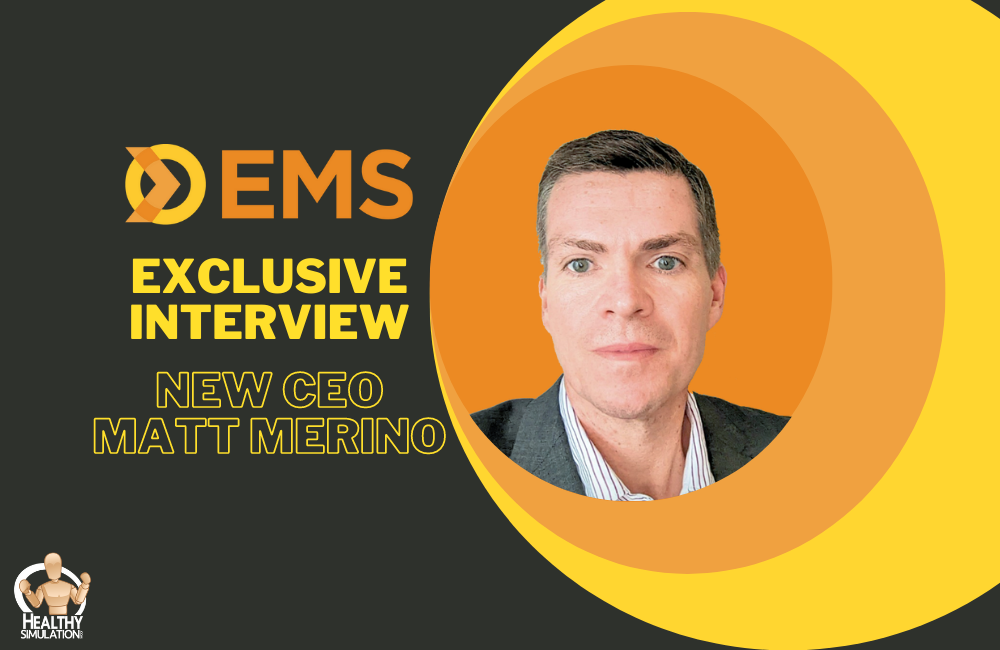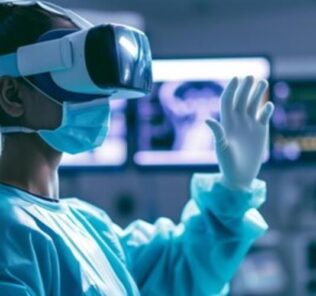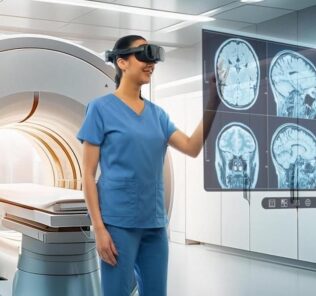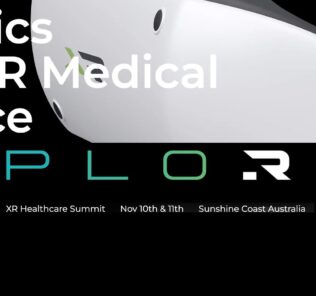Exclusive: Education Management Solutions New CEO Matthew Merino Shares Vision for Healthcare Simulation Industry
Education Management Solutions’ (EMS) new CEO Matt Merino is a force to be reckoned with. As a former Team Leader and member of the U.S. Army Special Operations Community, Mr. Merino is highly accustomed to high-stakes military simulation training. We at HealthySimulation.com are confident the former Orbis Education Chief Experience Officer has the background necessary to take Education Management Solutions to the next level. On the heels of the recent acquisition of EMS by Collegis Education, HealthySimulation.com sat down with Matt to learn more about his global vision for the future of clinical education.
HealthySimulation.com: Matt, thank you for meeting with us today. Tell us about your background and interest in working in the healthcare simulation industry.
Merino: My first exposure to simulation was almost 20 years ago. Prior to all my more recent experience in the Higher Education sector, I was part of the United States Army Special Operations community. When we were in that environment or preparing for that environment, the training aspect focused on creating as realistic an experience as you could prior to being there.
Sponsored Content:
That constant immersion was in its infancy, but it was enough to give you a point of reference from the beginning. After my time in the military, and living in 16 different countries all over the world, I fell in love with the idea of healthcare education in terms of, “Can we improve healthcare? Can we improve education for everyone, globally?” In the public sector, most recently, I was with Orbis Education as a senior executive of the largest provider of solutions and program enablement for pre-licensure nursing schools.
I was fortunate enough to not only be involved with developing those partnerships, but at the time, I was overseeing every simulation and training center we built. It was a great opportunity to drive a program from cradle to grave, across all aspects of the entire process. I oversaw the construction of 25 centers. I bring a bit of a unique view [of healthcare simulation to EMS]. I don’t view simulation as an island or something that lives on its own. It is such an important piece of a much bigger endeavor. That’s my lens in this space.
The quality of healthcare education and the quality of healthcare delivery impacts every single one of us. It’s not discriminatory. It’s not one of those areas that some people get affected by and some people don’t. Throughout my life, I’ve always been drawn to opportunities that allow you to be in a place that can have an exponential impact on solving systemic problems and issues. The truth is this: we are at a demographic disadvantage right now when it comes to healthcare. There simply are not enough clinical providers, and that is not going to change anytime soon. Healthcare simulation has a key role to play in enabling better, more equitable access to healthcare education and delivery.
Coming to EMS was the opportunity to take what I learned and experienced and what I was a part of and expand the education side, incorporate simulation, and come up with unique ways to deliver education. The opportunity for EMS is to partner with healthcare educators and healthcare providers, enabling a robust group of technology solutions and applying them to drive better healthcare outcomes. I think that my lens is probably a little different than a lot of people, and that’s probably a good thing because I view this space and think about it differently than most people do.
Sponsored Content:
HealthySimulation.com: Tell us what you are most excited about with your new leadership role at Education Management Solutions.
Merino: I’m excited about everything! I come to an organization that has been around for an incredible amount of time, has a great history in the healthcare simulation space, and has a wonderful foundation. We have a great set of partners already. I think we have enormous growth opportunities because of how we think about ourselves. EMS is not a single solution to everything, but we are a part of solving much bigger things. I don’t want to call it limitless, but I do believe that as an organization, we’re technology enablers at the end of the day.
We are the people that enable educators, practitioners, government, military, or VA, to make them great at what they do. I’m most excited about being able to support those people who do what I consider to be some of the most important work in our society. Really, I think it starts with medical simulation, and complimentary education and practice technologies that offer opportunities to solve problems.
We have the opportunity with clinical simulation to deliver a safer, more robust education and practice. We have the opportunity to enable underrepresented people who perhaps are limited by location and barriers that exist with physical space.
HealthySimulation.com: How do you think COVID has impacted the healthcare simulation industry, and where are we going from here?
Merino: I’m not sure we have a full realization of COVID’s impact yet, including the impact of the medical outcomes and long-term challenges. We’re going to discover a lot of this over the next 5 to 10 years. I do think COVID forced adoption in some areas where there was no other choice. Simulation had to be the replacement, and that’s a great thing, even though it was a forced adoption in some ways. Now we need to ask, was it was successful? If so, then how do we stay here? How do we broaden it? How do we measure it? How do we carry it forward? And not just from education, but to providers – how do we connect those folks, and as a collective community, move it?
I think simulation is an effective way to educate and replace some of the in-person experiences. We have to think about the opportunity simulation offers. It helps solve the questions: Why can’t people who are in different locations be involved in the same education event? Why can’t people in different parts of the world do it? Why do people in different communities require a facility to use simulation?
HealthySimulation.com: What does the healthcare simulation industry need to do to increase early-bird adoption to mass adoption?
Merino: The first step is visibility. We have to be visible about not only what we’re doing, but the impacts of it. Second, we have to not think of healthcare simulation in isolation. Simulation isn’t standalone. It is such an essential component to enable not only education but practice as well. In medical simulation, we tend to understand that we must view it that way. This applies not only to the hands-on simulation and capture technology but more importantly to the data and the outcomes that go with it. How do we collect it? How do we evaluate it? How do we report it? How do we make it readily available for everyone to see? How do we create a more robust, more sophisticated set of reporting analysis and actionable data?
I think that’s essential. Another critical thing – we have to work to eliminate the restrictive aspects of simulation, specifically location and equipment. We have to get to a world where we are removing restrictive barriers. It’s incredibly important. If we really want adoption, we have to find solutions that create real impacts on the problems that are out there. At EMS, we’re thinking constantly about – how can we support people in underserved communities. How do we support people in rural or resource and infrastructure-limited locations? How do we create those opportunities for our partners?
We’re in a position right now where VR, AR, and XR – all that technology is moving fast. Right now, we’re very early on. There will probably be consolidation and we will see players come and go. As such, I don’t think we’re believers in being married to one technology solution in that space right now. Instead – we say – let’s create an inclusive environment that brings in a bunch of different technologies and a bunch of different connections so that whatever technology mix works for someone, EMS can help unify and measure training across its entirety.
HealthySimulation.com: Finally, any new EMS innovations you are willing to share?
Merino: All I can say right now is…. stay tuned for big announcements from EMS at IMSH 2023!
More About EMS
EMS’ healthcare simulation-based solutions for healthcare training environments range from clinical simulation management software and hardware to counselor education and virtual interactive computer-based training tools. Further, EMS’ comprehensive technology platform aggregates curriculum and learner performance data across online, didactic, clinical, and simulation-based training modules.
Since its founding in 1994, EMS’ mission has been to provide a safe environment for healthcare professionals to develop patient care skills. The company feels strongly that its state-of-the-art technology makes simulation training even easier, from automated training sessions to feature-rich, interactive tools in the simulation classroom and mobile solutions for in-situ training environments.
Learn More About EMS’ EDUCATIONiQ
Lance Baily, BA, EMT-B, is the Founder & CEO of HealthySimulation.com, which he started while serving as the Director of the Nevada System of Higher Education’s Clinical Simulation Center of Las Vegas back in 2010. Lance is also the Founder and acting Advisor to the Board of SimGHOSTS.org, the world’s only non-profit organization dedicated to supporting professionals operating healthcare simulation technologies. His co-edited Book: “Comprehensive Healthcare Simulation: Operations, Technology, and Innovative Practice” is cited as a key source for professional certification in the industry. Lance’s background also includes serving as a Simulation Technology Specialist for the LA Community College District, EMS fire fighting, Hollywood movie production, rescue diving, and global travel. He and his wife Abigail Baily, PhD live in Las Vegas, Nevada with their two amazing daughters.
Sponsored Content:




















